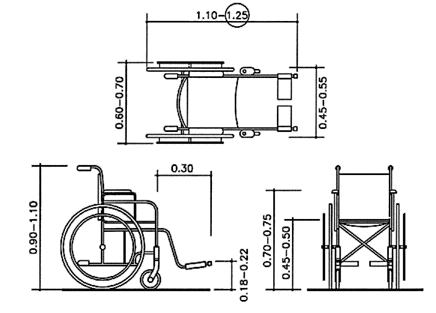- Vandewalle: vehicle dimension laws (Max Bicycle Width: 75cm)
- WikiAnswers: Average bicycle (Average Bicycle Width: 65cm & Length: 180cm)
Dinbelg Data: (Dinbelg: Dimensions of/for wheelchair users)
Width of passage | 80 minimal |
|
| 90 optimal |
| Vertical reach | 120 maximal |
| Bend down | 40 minimal |
| Turning radius | 150 wheelchair user |
|
| 190 with companion |
| Operation controls | 90 – 120 cm |
| Supporting bar | 85 – 90 cm |
Technical Data:

(http://www.un.org)
Critical wheel chair dimensions:
General dimensions on Accesscode.info




















